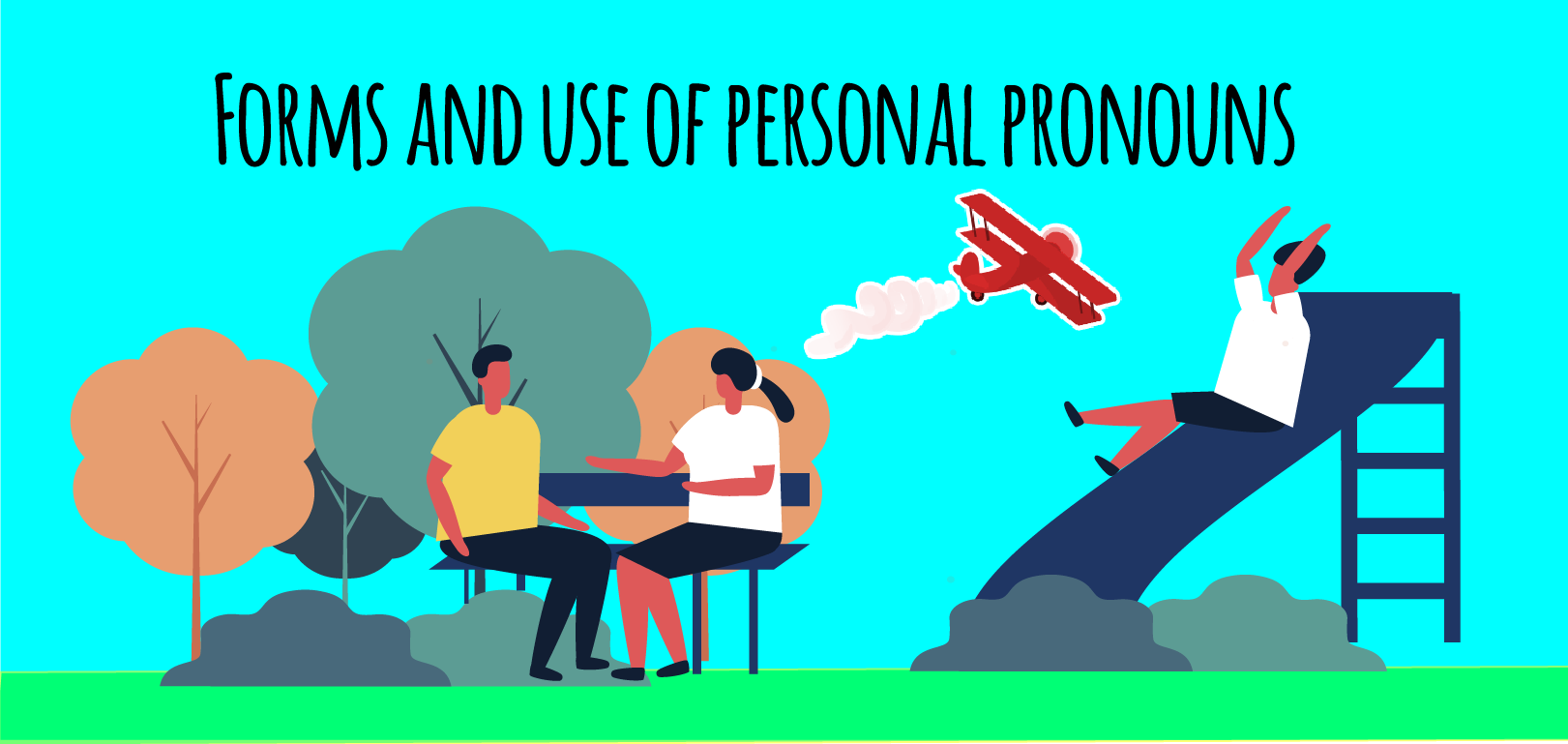Forms and use of personal pronouns

Forms and use of personal pronouns
INDEX OF CONTENTS
- Personal pronouns
- The object pronoun is also used after prepositions
- The specific case of “one”
- Indefinite pronouns
- The expletive pronoun
A pronoun is a small word that is placed in place of a noun, a phrase, or even a clause, to avoid repetition. It agrees in number and gender with the noun, phrase or clause it replaces, which is called the antecedent. The pronoun refers to its logical antecedent in a sentence or paragraph, or in the context of dialogue. Within a sentence, the logical antecedent is usually the previous or most recent noun.
Personal pronouns
The personal pronouns in English are quite easy to master. However, it is important to remember that for the third person singular, the choice of the pronoun depends on the gender of the antecedent: ( él) he (etc.) if it refers to a man or an unknown person, “ she” if she is refers to a woman, and to everything else.
The feminine pronouns ” she” ella / “her” ella / ella are only used with women ( “una mujer“ (a lady etc.) , or with some creatures or animated or moving objects that the English language can give a quality of femininity (examples “perro” dog, ” gato” cat, “barco” boat).
The object pronoun is also used after prepositions.
Don’t confuse possessive pronouns (used in place of a noun) with possessive adjectives.
Subject pronoun | of object | Possessive pronoun | Possessive adjective | |
| 1st person sg | I | I | mine | me |
| 2nd person sg | you | you | yours | your |
| 3rd person sg | he, she, it, one | him, her, it, one | His, hers, hits | His, her, its One’s |
| 1st person pl | we | Us | ours | our |
| 2nd person pl | you | you | yours | your |
| 3rd person pl | they | them | theirs | their |
Examples:
- Look at that man. Can you see him? He’s over there, and that’s his wife with him. (Mira a ese hombre. ¿Puedes verlo? Él está allí, y esa es su esposa con él).
- There are two bikes in Peter’s garage; the green bike is his and the blue one is mine. (Hay dos bicicletas en el garaje de Peter; la bicicleta verde es suya y la azul es mía)
- We ‘ve lost our way; can you help us please? (Hemos perdido nuestro camino; ¿Puedes ayudarnos porfavor?)
- Have you seen my phone? I can’t see mine, but yours is over there. (¿Has visto mi teléfono? No puedo ver el mío, pero el tuyo está ahí).
- One should always bring a map with one, in case one loses one’s way (Siempre se debe traer un mapa con uno, en caso de que se pierda).
The specific case of “uno” (one)
The word ” one” causes problems not only for students, but also for linguists . Unlike other pronouns, one can be used as a noun, to replace a previously mentioned noun. In the last example given above, we find the phrase,
Indefinite pronouns
There are other pronouns similar to personal pronouns, and they are generally used as personal pronouns; These are indefinite pronouns or impersonal pronouns : they include words like someone, anyone, anything, whoever, and even enough or much or all (alguien, cualquiera, cualquier cosa, quien sea, e incluso suficiente o mucho o todo) .
Examples:
- Someone told me you’re going to New York next week. / Alguien me dijo que irás a Nueva York la semana que viene.
- I can’t see anything / No puedo ver nada
- Whoever said that was obviously not telling the truth / Quien dijo eso, obviamente no estaba diciendo la verdad.
- Plenty was said at the meeting, but the directors couldn’t agree. / Se habló mucho en la reunión, pero los directores no estuvieron de acuerdo.
- Enough is enough / Suficiente es suficiente
- All is not lost. / No todo está perdido.
Neutral gender pronouns
Sometimes we need to use a third person singular pronoun to refer to a person, without knowing if this is male or female, or without wanting to specify gender. For obvious reasons, we cannot use it; but we cannot use it either, since it is not a gender-neutral personal pronoun, but rather refers to an object.
The classic solution in English is to use they / their as a singular pronoun : keep in mind, however, that while these pronouns can take on a singular meaning, they are still used in the normal way, as if referring to a plural entity.
- Always avoid wearing the “his or her “ (el or ella) that is sometimes used: this is not a good style, even if it is occasionally necessary.
The pron equivalent expletive
It is known as an expletive pronoun or a fictitious pronoun; This means that it does not refer to a noun that has already been mentioned ; refers to a noun object or complement that has not yet been specified.
It is a third-person pronoun, but it can be used in the singular or plural, depending on the noun it refers to. It is normally only used with the verb be , it can be used with any tense of the verb, even preceded by a modal verb. Only occasionally can it be used with other verbs, such as go, stop, or appear.
Examples:
- There was a huge explosion / Hubo una enorme explosión
- There are thirteen mistakes on your spelling test. / Hay trece errores en su prueba de ortografía.
- I think there is a hole in my bucket. / Creo que hay un agujero en mi balde.
- I think some people will come. / Creo que vendrán algunas personas.
And this is everything we have prepared for you related to the different pronouns in English. Remember, that all the calls for the official English exams are uploaded on this platform.




No entendí nada